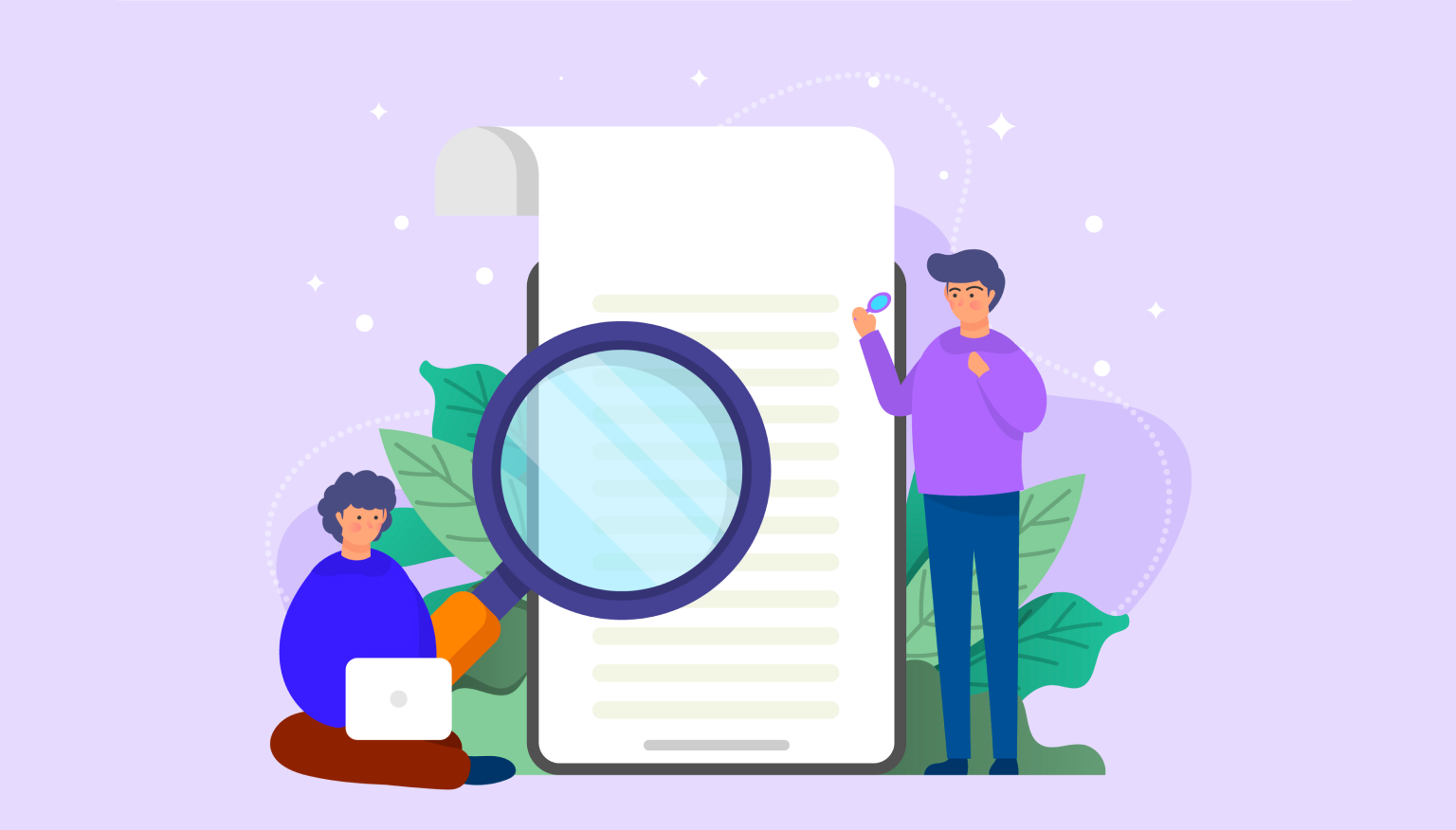SEO and User Experience Guide
SEO and user experience share some commonalities. Although these are two separate areas, you can find elements that connect them. That's where the idea for this little SEO and user experience guide came from. In it, you'll find 13 different tips to help you better optimize your site. They range from simple and "descriptive" tips to more technical ones that require a bit more work. They all have one common goal - to improve your site for both users and search engine bots.
SEO and User Experience Guide - list of 13 tips:
Use short URLs
In general, short URLs are better than long ones. Of course, you should not dwell on this, however, if you have the opportunity to use a shorter address - do it. Both search engine robots and users themselves will thank you for this.
Short addresses are just more useful. Using this address is definitely easier:
- read
- remember
- embed (e.g. on a social networking site)
Which is why almost every SEO and user experience guide has advice keep links as short as possible.
Short URLs were also one of the sub-points in the Google search engine schemas post.
Increasing CTR by optimizing meta tags
Meta tags have their own character limit. If you have the opportunity to present to visitors what the essence of the service is, do it in the best possible way.
The title and description are kind of an introduction for people who might visit your site. Therefore, the introduction should be interesting. If this is such a good opportunity for self-promotion, why should you use far fewer characters than is allowed?
Meta tags should encourage users to sign in. Therefore, they can be elements of the CTA (call to action) type. And don't forget that the Google search engine bolds phrases that appear both in the search bar and in the list of found pages.
Meta tag optimization is part of on-page SEO.
Invest in high-quality hosting
Website loading speed can be improved in several ways:
- through minification of scripts
- through proper configuration of the .htaccess file
- using a CDN (like CloudFlare)
- cache usage
- merging additional resources into one larger file
However, all these methods will be useless if you have bad hosting. It is important that you have a high-end server that responds fairly quickly to requests sent to it. In particular, look out for SSD hosting, which works wonders. We use it in particular on this website.
Format your content using various elements
Huge blocks of text. We don't like them, do we? That's right - why wade through long clumps of sentences when you can differentiate content with many different elements.
If you have such an opportunity, be sure to use it:
- headings
- subheadings
- bulleted lists
- well measured lists
- text formatting (bold, underline and others)
Your readers will definitely thank you for diversifying your content.Texts that are varied in this way are simply easier to read. Smoother, faster, more enjoyable. Therefore, it is not surprising that this SEO and user experience guide mentions it.
If you want to learn more about how to present content in a friendly way, check out the post about the user friendly site.
Take care of conversions on the home page
The SEO and user experience guide should not overlook tips on how to properly optimize the home page of the site. Why?
The home page is your business card. This is where the different paths of your visitors diverge from. Your goal is to make sure they get to the right places. These include, for example, buttons for registering, purchasing goods, etc. Simply all those elements that are subject to conversion rate measurement.
So make sure your homepage looks friendly. It should contain elements that the user has to click on. This is where all the attention of every visitor to your site should be focused.
Don't distract readers with unnecessary elements
This is by far one of the worst things to find on websites. Destructors. distracting factors. Elements that form the rejection of the reader.
I mentioned earlier that every website should have a goal. This also applies to individual pages. This is extremely important as everyone wants users to spend as much time as possible on their site.
See how this entry is built. There are no unnecessary elements on the sides of the screen that distract from the text, which is the main focus of the recording. There are, for example, social buttons and sticky menus (i.e. navigation "glued" to the top of the workspace), but they do not absorb attention as much as, for example, ads or overly long sidebars.
Create clear content in "what..." and "how..." posts
Every new SEO and user experience guide makes sure to mention Google's "Direct Response" search feature. Although in other countries it has existed for a long time, in Poland it is something of a novelty.
Direct Answers provides users with answers to many problems. These include questions such as "how to bake a pie?" or "what is a cabbage?". If you want the content of your site's pages to also appear in direct replies, you need to optimize the content. How?
The answer is simple: first of all, give clear answers. If the problem is step-by-step and requires a solution, serve users with a bulleted list. However, if you want to explain a concept, include a definition. Just respond to needs the way you yourself would like to be helped.
Show content last modified date
Nobody likes to be lied to.Is there any way to "trick" the visitor with published or modified dates? Unfortunately yes.
Bloggers sometimes (too rarely!) update their posts. This is done primarily so that Googlebots will notice new content on individual pages and potentially rank them higher. Users themselves benefit from this, as they simply receive up-to-date information on specific topics.
Entries are almost always accompanied by information about the publication date. This is a good practice as it shows the point in time when the text was created. However, it is even better to include the date the record was last updated. This allows users to quickly see when the last changes were made. This way they will know if they are dealing with outdated content or if it has been recently updated.
If you update your blog posts and don't include the last update date, you're missing out. Ability to say: "Hey, this text has been recently updated - you can read it without fear!".
update old content
Updating old posts is a very good practice. It's hard to find an SEO and user experience guide that doesn't address this topic. Why?
The answer is very simple: updating content benefits both robots and users. As I mentioned in the previous subsection, Google may rank a given subpage higher. This may be due to an increase in valuable, longer content.
Users, on the other hand, just get the latest information. Readers can see that you care about them and want to provide as relevant content as possible. This is extremely important.
However, I think it's worth mentioning a certain type of content that doesn't lose its value over time. I'm talking about evergreen content.
Use Share Buttons
You can't create shareable content unless you provide users with effective tools to do so. They include buttons for sharing content.
Examples of such buttons can be found, for example, in this blog article. They are located in two places: at the top of the message and on the side of the screen. In the mobile version, these buttons change their position and "stick" to the bottom edge of the workspace.
If you want to have this type of button on your site and you are also using WordPress, then your task is much easier. One of the most popular (free) social media button plugins is the Simple Share Buttons Adder. I recommend it with a clear conscience.
Use Appropriate Headings
Headings are mentioned in this SEO and User Experience guide for two reasons. Yes, you think correctly. The first is convenience for users, and the second is the benefit for search engine robots.That is, like many other issues mentioned earlier in this text.
Headings are implemented using 'h' tags (h1, h2, h3, etc.). They provide some guidance for readers. They give an idea of what the section is about. They also allow you to quickly "scan" content by reading only the headlines. You have no idea how many people check in this way whether the text is suitable for reading from cover to cover.
Thanks to headings, search engine robots can better understand the content of the entire text. You have the opportunity to tell them which rubrics are more important. This is achieved by proper use of title ranks (the higher the number next to the "h", the less important the title).
Weave numbers into your post titles
It's hard to find an SEO and user experience guide that doesn't include this tip. The use of numbers in job titles has a significant impact on several questions:
- allows you to order the content
- warns users in advance that they may expect a bulleted list to appear in the text
- attracts the reader's attention
- combined with words like "tips", "recommendations", "secrets" or "techniques" increases CTR (click through rate)
By the way, take a look at the title of the post you are currently reading. It also has a number inside. It is important, however, that it is not written in verbal form, because then it reaches our human mind more slowly.
Try to describe the topics comprehensively
A thorough presentation of the topic is well received by both users and search engine robots. Almost every SEO and user experience guide talks about this. However, the difference lies in how the theme mentioned is implemented.
Long content is useful because it can resolve more doubts. It also serves as the basis for weaving more images into content, which (when used skillfully) can greatly increase the appeal of almost any text.
This fact is also highly valued by search engines as it greatly increases the likelihood that a particular subpage will rank higher in the list of results.
SEO and user experience guide - why two concepts together?
The answer is very simple: SEO and user experience have a lot in common.
This is because Google's search engine algorithms are increasingly trying to mimic human behavior patterns. They strive to ensure that everything that is useful to people is positively perceived by search engine robots.
Therefore, it is worth remembering both SEO and user experience.
















